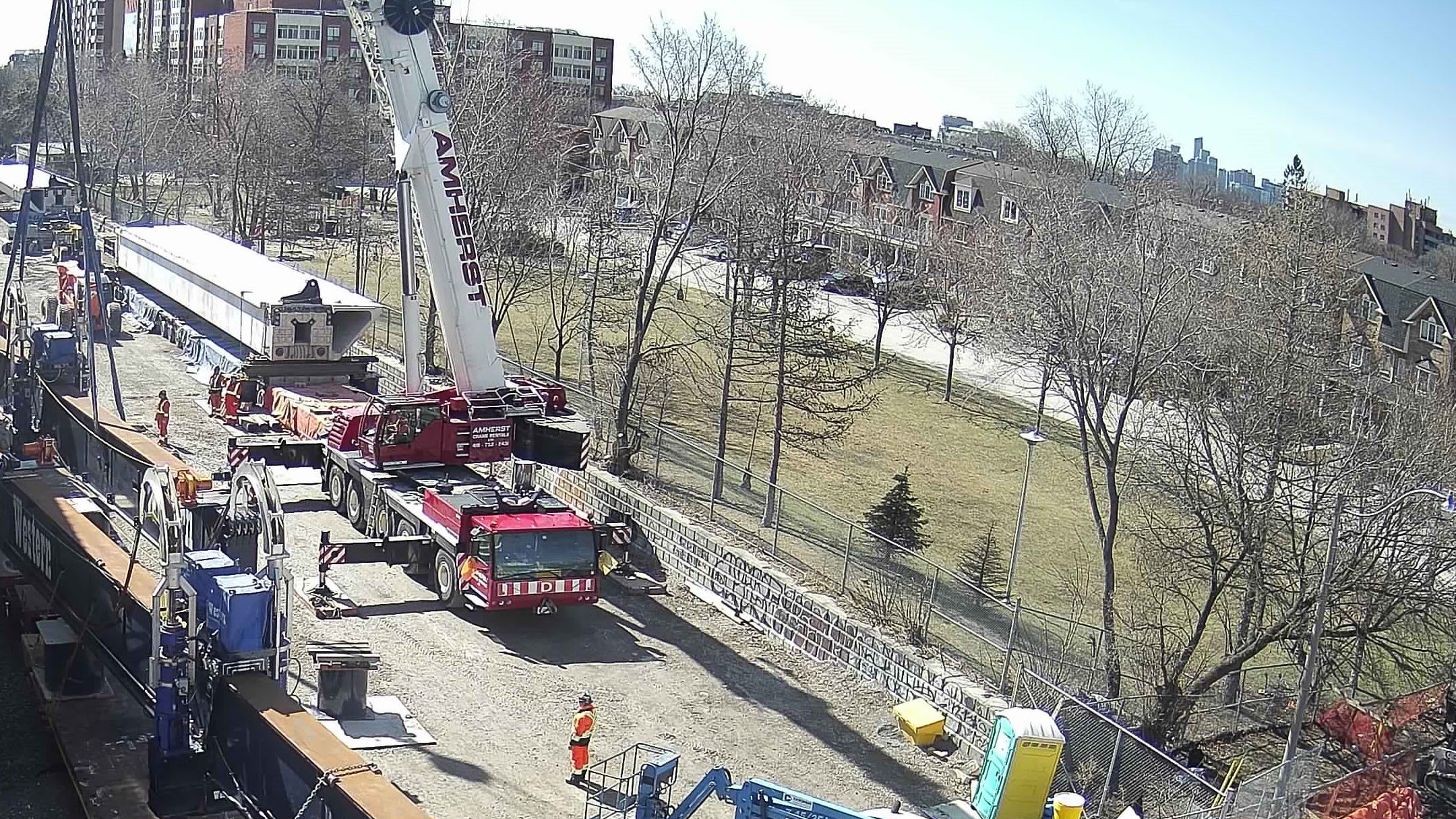New timelapse shows large girders installed above Dupont Street
New video shows first use of concrete girders on the Davenport Diamond Guideway project.
May 2, 2022
Crews have been busy installing girders on the Davenport Diamond Guideway project.
The girders form the bridge deck of the guideway, which will allow GO Trains to travel above the CP Rail freight train tracks. When it’s done, the new guideway will improve GO service reliability and eliminate the busy intersection (where the Barrie GO Line intersects with the CP Rail tracks).
This project supports GO Expansion efforts for more frequent and quieter trains traveling in both directions on the Barrie GO Line.
Pre-cast concrete girders were installed to span Dupont Street. While not obvious from the exterior, reinforcing steel rods are used inside the concrete to substantially increase strength and durability.
Have a look at the latest timelapse video:
The two girders spanning Dupont Street each measure 29.5 metres long and 2 metres tall, and weigh 297 tonnes (595,000 lbs) – about the same weight as 120 average sized pick-up trucks.
The remaining four girders used on either side of the Dupont Street bridge are each 21.3 metres long, 2 metres tall and weigh 210 tonnes (420,000 lbs).
The right equipment for the job
The massive girders required an array of equipment to create a special configuration for the challenging installation.
The necessary equipment included:
- 1100-tonne (2,200,000 lbs) hydraulic gantry
- 22-axle line self-propelled modular trailer (used to transport the girders by road)
- Two flat deck railcars
- Rail King (used to move the rail cars)
- 500-tonne (1,000,000 lbs) crane
- Various manlifts, zoombooms and telehandlers
The girders were delivered from the plant in Rodney, Ontario to the Paton Road construction area using the 22-axle self-propelled modular trailer.
They were stored alongside the diversion track to await the railcars. Once the railcar was on site, various equipment was used to transfer the girders from the modular trailer to the rail car.
The rail car, with the girder loaded, then travelled from Paton Road to Dupont Street with the help of a Rail King, where the girders were each raised into their final position above Dupont Street using a hydraulic gantry.
View from Paton Road: gantry crane beams for lifting the girders – being placed on rail car for transport from Paton Road to Dupont Street. (Metrolinx photo)
Advance planning and coordination
A lot of planning, coordination and effort went into the logistics behind the 14-day installation.
First, all work had to be done on night shifts as the railway tracks were used to transport the girders from Paton Road to Dupont Street. The work needed to take place when no trains were running.
Second, the timing of the rail car was coordinated around the train schedule during the day and to ensure the installation could proceed smoothly during the night.
Third, a full closure of Dupont Street was required to put up the spans over the roadway.
The team had a crane staged on Dupont Street for the duration of the work to mobilize/de-mobilize and re-configure the hydraulic gantry for each lift.
Artist’s design rendering of the elevated guideway over Dupont Street, looking east. All renderings subject to change. (Metrolinx image)
What’s next?
The construction team will now start putting up the remaining concrete girders, starting this summer at Wallace Avenue. This will begin a rolling operation heading north to the Davenport Diamond until all girder installations are complete.
For more information on the Davenport Diamond Guideway project and to get the latest updates, sign up for the Toronto West weekly e-blast here or follow the project @GOExpansion on Twitter.
Residents can also connect with a dedicated community engagement team by emailing questions to TorontoWest@metrolinx.com.
by Teresa Ko Metrolinx communications senior advisor
